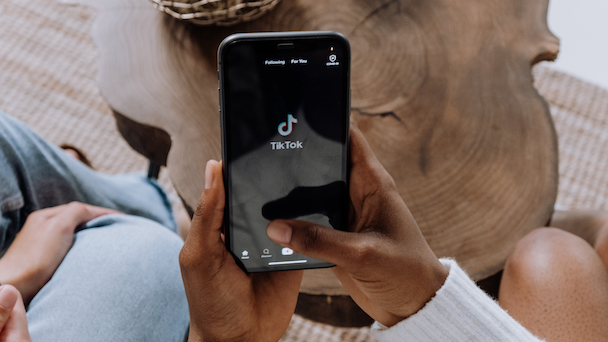As Meta, Twitter and Snap falter, TikTok sees chance: ‘Marketers have to move budgets’
TikTok could be the next heavy hitter in digital advertising. As its appeal grows, however, so too does scrutiny.

TikTok is attracting ad dollars as advertisers reallocate spend from Meta / Cottonbro Studio
In the wake of mass layoffs at tech platforms including Twitter (whose new owner Elon Musk axed about half of the company’s 7,500 employees), Meta (which slashed 11,000 jobs last week) and Amazon (which reportedly plans to lay off 10,000 corporate workers), TikTok recruiters have been hard at work. Reports indicate that the video-sharing app is swooping in to pick up laid-off engineers – and aims to double its staff to around 2,000.
At the same time, the company is facing growing scrutiny from US government agencies. The US Federal Bureau of Investigation (FBI) in particular has raised concerns about user data security under the company’s Chinese ownership (TikTok is owned by Beijing-based ByteDance).
The agency’s director, Christopher Wray, told members of Congress this week that “[there’s a] possibility that the Chinese government could use [TikTok] to control data collection on millions of users; or control the recommendation algorithm, which could be used for influence operations if they so chose; or to control software on millions of devices, which gives it opportunity to potentially technically compromise personal devices.”
Amid the criticism, TikTok has agreed to hire more US-based staff as it scales its US operations. Beyond the drive to acquire some of Silicon Valley’s top talent, another motivation for TikTok’s hiring push, however, is the enticing marketplace opportunity created by the recent failings of its competitors. By bulking up its staff, it will be able to invest more deeply in product development – and make TikTok an increasingly appealing environment for advertisers.
Advertisement
TikTok’s advertising advantage
For TikTok, it’s especially good timing to gun for more ad dollars: advertisers are slashing spend on Twitter as brand safety concerns grow in light of Musk’s takeover. Meanwhile, Snap’s latest earnings revealed dismal sales growth as advertisers pull back in light of slowed user engagement, and Meta has taken a major hit to its ads business as a result of Apple’s privacy-focused operating system updates.
“Snap and Meta’s shortfalls represent TikTok’s opportunity, as marketers have to move budgets somewhere – even if they are pulling back spend,” says Shiv Gupta, managing partner at U of Digital, a digital marketing education firm.
For one, TikTok doesn’t come with the same degree of brand safety and suitability concerns that Twitter is facing. “TikTok is definitely a viable and safe platform for businesses to advertise on right now,” says Mike Allton, head of strategic partnerships at social media management platform Agorapulse. “And it’s incredibly effective. With a massive user base spanning all demographics, and more tools ... adding professional support, businesses can easily leverage the platform to reach their target audiences. That’s the opportunity that exists today.”
The fact that TikTok has built its brand around a core message of authenticity bolsters its position in the race for ad dollars too. “TikTok is the platform of the people. That’s why it is so strong. It’s here to stay for that reason,” says Kaeya Majmundar, chief executive officer of Swaypay, a platform that incentivizes users with cash for making TikToks about brands. Advertisers have the opportunity to cash in on the craze when they buy into the ethos of authenticity in their TikTok marketing. “Any sort of ad spend that facilitates ‘the brand of the people’ makes sense – and cents,” Majmundar says. “There is a shift from soulless ads built to sell to people versus real people selling real stories about real purchases. Face it – entertainment and media is the new advertising. It’s all about storytelling, and trust is on the line.”
Advertisement
With rampant signal loss across the digital ecosystem as data privacy efforts increase – with third-party cookies seeing widespread deprecation and Apple cracking down on cross-app tracking – TikTok isn’t facing the same degree of criticism over media measurement that it may otherwise have. As Gupta puts it: “TikTok is still somewhat nascent as an ad platform and marketers have had to measure it ‘bluntly,’ which in the past was a disadvantage, but is now turning into an advantage as granular measurement erodes elsewhere.”
Allton observes that TikTok seems to be doing “exactly what Meta and Twitter did years ago” by investing in a product that “creates sticky behaviors that drive up user count and usage time simultaneously.” It’s a formula that’s long proven successful with advertisers, who are all battling for eyes in the attention economy.
This isn’t to say that TikTok is the perfect platform for today’s advertisers. Despite the media measurement shortcomings of other platforms, TikTok’s capabilities are also limited. Advertisers have said that the platform’s tools for attribution – a key metric for many brands – leave a lot to be desired. Plus, as Matt Navarra, a leading social media consultant, puts it: “For many advertisers, TikTok still sits in the experimental bucket. A lot of small- to medium-sized businesses particularly – and some larger ones – are still not confident and convinced by TikTok in terms of its potential as an advertising platform.”
TikTok has done a lot in the last year, however, to develop its ads business. It’s rolled out a handful of new ad formats and tools for advertisers. For now, says Allton, the company has an opportunity to invest more heavily in product innovation while continuing to grow its appeal to advertisers.
The double-edged sword of ‘stickiness’
TikTok’s pursuit of ‘stickiness’ – while proven to grow user engagement and entice advertisers – may come with a dark side.
For one, the FBI’s concerns over users’ data safety on TikTok represent a highly-relevant consideration for most players in the advertising ecosystem, for whom data privacy and security have become top priorities in recent years as policymakers and tech platforms introduce new restrictions. “[TikTok has] its own form of chaos in regard to ... US investigations,” says Navarra. “Are they going to be able to strike a [balance] that segregates the data of US users from being sent out to anywhere else in the world? They’re still got that challenge – there’s still a risk that it could go wrong for them.”
And beyond concerns about ByteDance’s potential exploitation of user data, some have highlighted the potentially dangerous psychological effects of TikTok on users around the world. In March of this year, a handful of US states including California, Florida and New Jersey opened an investigation into TikTok’s impact on young users’ mental health.
But it’s not just government bodies that are wary. Even advertising industry stakeholders have raised concerns. “It’s really scary just how differently TikTok markets its domestic Chinese counterpart, Douyin. Fully understanding the addictive power of the app and its short-form content, the Chinese government has limited use of Douyin to only 40 minutes per day and has banned all overnight use,” says Linda Xiao, the North America director of creative technology and strategy at experiential agency Momentum Worldwide. In contrast, the average global TikTok user spends 95 minutes per day on the app.
Xiao points to TikTok’s core algorithm as a primary culprit. “One of the biggest, most compelling reasons for TikTok’s success is its use of artificial intelligence (AI) with its addictive ‘For You’ page algorithm. Every single action you take on the app builds up highly-personalized recommendations that tell you what you want and need before you even know them,” she says. With this kind of system running the app, users get sucked in and influenced by whatever content – however harmless or extreme – is presented.
And while content on Douyin is heavily moderated and primarily focused on educational content, the reins are much looser on the global version. All of this, says Xiao, “brings to question the safety and integrity of the globalized TikTok and why its domestic twin has been so heavily regulated while the global version has skyrocketed in popularity.”
It’s possible that, with the AI left fairly unregulated, the platform could run into similar issues that YouTube has in the past, with recommendation algorithms serving up increasingly extreme content, ultimately fueling misinformation and radicalization.
Advertisement
Navarra says that while the app is currently viewed as a more brand-safe environment than a place such as Twitter, it still faces challenges when it comes to content moderation. “TikTok, if it hasn’t already, will face the same challenges as it becomes more and more important to brands,” he says. “It has got all sorts of issues with misinformation and taking people down rabbit holes with content that, for young and vulnerable users, would be seen as inappropriate. And in terms of elections and other kinds of world affairs like the Ukraine war and the pandemic – those have all been hugely problematic for TikTok to manage with its moderation tools. These are issues that all platforms are going to have to become a lot better at in 2023.”
The platform is aware of advertisers’ heightened attention to brand safety and is actively working to address them. Earlier this month, TikTok announced a new partnership with ad verification firm DoubleVerify that will bring new brand safety measurement tools to advertisers.
It’s clear that for advertisers, TikTok promises potentially great rewards – but not without risk. Still, many will take the gamble.
And despite the challenges it faces in terms of establishing itself as a safe and trustworthy platform in the eyes of regulators and users, the app is still in a strong position to get a leg up on the competition. “Increasingly, TikTok is performing well,” Navarra says, “And it will continue into next year to ... undoubtedly eat away at the market share of other advertising platforms.”
For more, sign up for The Drum’s daily US newsletter here.
